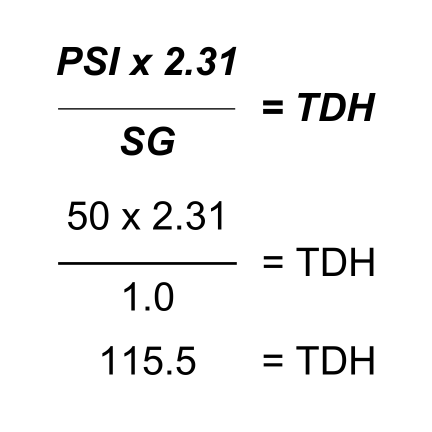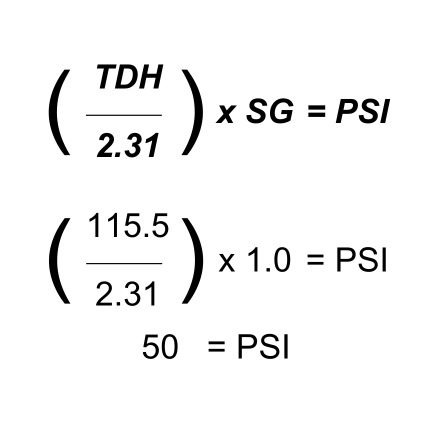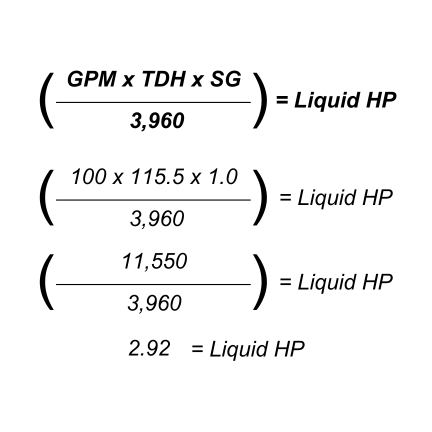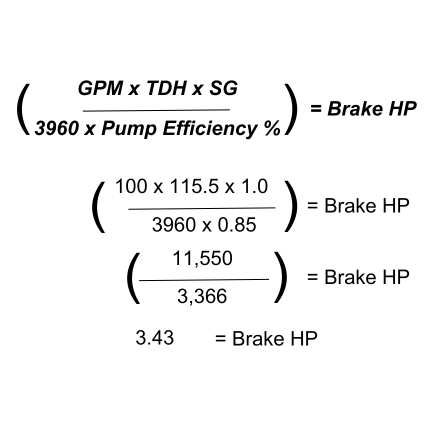When it comes to pump maintenance, sometimes you need to use conversions to get the right answers for a proper assessment. Have you ever found yourself searching online for formulas to fill in the gaps? Our engineers have created a "toolbox" of essential pump conversions that cover everything from specific gravity to pressure and power. We've worked through some of the most common conversions so you can understand how to do them on your own. With a little calculation, you'll be ordering parts and solving pump issues faster than ever before. [insert table image] Imagine you need a pump to add 50 PSI of pressure to your system, but your pump curve only shows Total Dynamic Head (TDH). How do you convert PSI to TDH? Using the standard pressure formula, we’ve calculated this conversion using water as the fluid, since its specific gravity (SG) is 1.0. Start by multiplying your PSI value (50) by the constant 2.31. Then divide that result by the fluid’s SG (1.0). This gives you 115.5 TDH. Now you know what to look for on the pump curve—115.5 TDH at your required flow rate. You can also reverse the formula to calculate PSI based on TDH. This is helpful when interpreting pump curves that are given in TDH rather than pressure. For example, if your TDH is 115.5, divide that by 2.31 and then multiply by the fluid's SG (1.0), which gives you 50 PSI. This confirms the pressure your pump will deliver. If you want to find out the horsepower generated by your fluid at a given flow and pressure, you need to calculate Hydraulic Horsepower (LHP). To do this, you’ll need the gallons per minute (GPM), TDH, and the specific gravity (SG) of the fluid. In this example, GPM is 100, TDH is 115.5, and SG is 1.0. Multiply these three numbers together, then divide by 3,960. The result is 2.92 HP. This tells you the power your fluid is generating. To determine the input power delivered by the motor to the pump, you need to calculate Brake Horsepower (BHP). This requires knowing GPM, TDH, SG, and the pump’s efficiency, which is usually listed on the performance curve. Using the same values as before—GPM = 100, TDH = 115.5, SG = 1.0, and efficiency = 85%—multiply GPM, TDH, and SG, then divide by the product of 3,960 and 0.85. This gives you a BHP of 3.43. Remember, BHP accounts for the pump’s efficiency, while LHP does not. If you'd like help with more examples or other calculations, feel free to reach out. Our team is here to assist with all your pump-related questions. Our engineers are dedicated to helping customers meet their pump needs every day. Whether it's solving complex problems or ensuring your repaired or customized pumping system fits perfectly into your setup, we’re here to help. Check your calculations with one of our experts today.  Aluminum Auto Parts Die Casting,Auto Die Casting Parts Maker,Die Casting Mold Automobile Parts,High Pressure Die Casting Manufacturer Ningbo Xuao Machinery Co.,Ltd , https://www.xuao-machinery.comSection 1: How to Calculate Pressure Conversions
How to Convert PSI to TDH

How to Convert TDH to PSI

Section 2: How to Calculate Horsepower Conversion
How to Calculate Hydraulic (Liquid) Horsepower

How to Calculate Brake Horsepower

TALK WITH AN EXPERT
Â